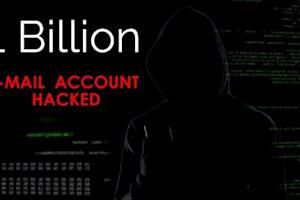We can all agree that keeping remote workers off the corporate network is the only sure-fire way to protect your organization from cyberattacks. After all, an attacker stuck on the outside cannot reach your valuable data. That’s what makes Splashtop remote access so valuable to your security – it provides remote access without allowing remote users onto your organization’s network.
A recent Tenable study that found 74% of organizations attribute recent business-impacting cyberattacks to remote work tech vulnerabilities. But what about the security of your remote workers’ home networks and devices?
A lack of visibility into your employees’ home networks remains a major concern as they are now working outside a controlled security environment. The passwords they use to access their remote desktop and the corporate data they access during remote sessions become available to any person who breaches their home network. There are measures your employees can take to secure their home network.
Even the most security-minded remote worker has likely overlooked a few of these home network security tips. To ensure they don’t remain vulnerable to a home network breach, share these tips with all your remote workers.
Tip 1: Update your router and Wi-Fi.
Change default settings and use complex passwords for your broadband router and Wi-Fi network. Then, select a generic name for your home Wi-Fi network (SSID), better yet, hide your SSID and delete the brand name of the equipment. Finally, update the router software and ensure the Wi-Fi is encrypted with modern protocols (e.g., WPA3) while older protocols (e.g., WEP [Wired Equivalency Privacy] and WPA [Wi Fi Protected Access]) are disabled.
Tip 2: Update your software regularly.
Most modern software applications will automatically check for newly released updates. However, you need to make sure they do. If automated updates are not happening for a specific software, either replace that software or purchase software that identifies and centrally manages all the installed software updates on your home computer. As hackers continue to dream up new attack vectors, these regular software updates become increasingly critical to fend them off. Updates provide critical patches and security fixes for newly discovered threats and vulnerabilities.
Tip 3: Remove unneeded services and software.
It’s amazing how much unneeded (and security compromising) software and services come bundled with a new laptop. Known as “bloatware,” they slow device performance and widen the attack surface of your network and devices. A quick Google search explains what each bloatware app or service does. Remove those you don’t need, which is most of them. Also, if you are using an older device, you know which services you do and don’t use. That makes it even easier to choose the ones to remove immediately. Finally, note that “Stop this app” is not the same as “Remove this app.” You want to remove them.
Tip 4: Do not keep factory-default configurations of hardware and software.
To make their products easy to troubleshoot and easy for consumers to use, most hardware/software vendors’ products arrive with factory-default configurations in place that ignore security. They’re all about convenience. Change the default configuration to reduce vulnerabilities and protect against intrusions.
Tip 5: Change default log-in passwords and usernames.
Most network devices are pre-configured with default administrator passwords to simplify setup. Not only are these not secure, they are often easy to find via a Google search. Hackers know this and easily access home networks that have failed to change them.
Tip 6: Use strong passwords.
A long password is a strong password. According to IronTech Security, if a password is only four or five characters, a hacker using ‘brute force’ techniques can hack it instantly. Yet, a password with 18 characters (even if they are just numbers) can take up to 9 months for a hacker to crack the code. So, use long passwords with less-than-obvious sequences, and never use the same password in more than one place. So, if a hacker does compromise one of your accounts, your others will remain secure.
Tip 7: Run up-to-date antivirus software.
A reputable antivirus (AV) software application is an important protective measure against known malicious threats. It can automatically detect, quarantine and remove various types of malware, such as viruses, worms and ransomware. Many AV programs are very easy to install and use. Enable automatic virus definition updates to ensure you are keeping pace with the latest threats. Finally, turn on the software’s extra security features such as parental controls, email protection, and malicious websites blocking. The scan will probably slow down your computer. Take a break, get a coffee, go for a walk, do not disable or stop the scan.
Tip 8: Lock your screen when you’re away from your computer.
The new normal of remote work means that many people are leaving their home computers on for longer hours. Make sure to lock your screen when you are away from your computer, especially if you have younger children at home, occasional visitors and/or roommates. Do not share your work computer with anyone.
Tip 9: Install firewalls on all your devices.
Device-based (or host-based) firewalls inspect and filter a computer’s inbound and outbound network traffic. These come with most modern devices, so make sure you turn them on. Windows and Linux operating systems come with a built-in, customizable, and feature-rich firewall.
Tip 10: Consistently back up your data.
Make regular backup copies of all the valuable information stored on your device. You can use cloud-based backup services or USB storage. You may prefer the USB route to keep it all in-house, literally. Yet, a third-party backup application can simplify and automate the process for those not diligent enough to remain consistent. Finally, encrypt your backup to protect your information.
When it comes to remote work, home is where security starts.
Take the time to share these simple, yet often-overlooked security measures with your remote workers. By following them, you can boost the success of your remote workforce strategy and significantly reduce the attack surface of your employees’ home networks, keeping both them and your organization safe from modern cyberattacks.




